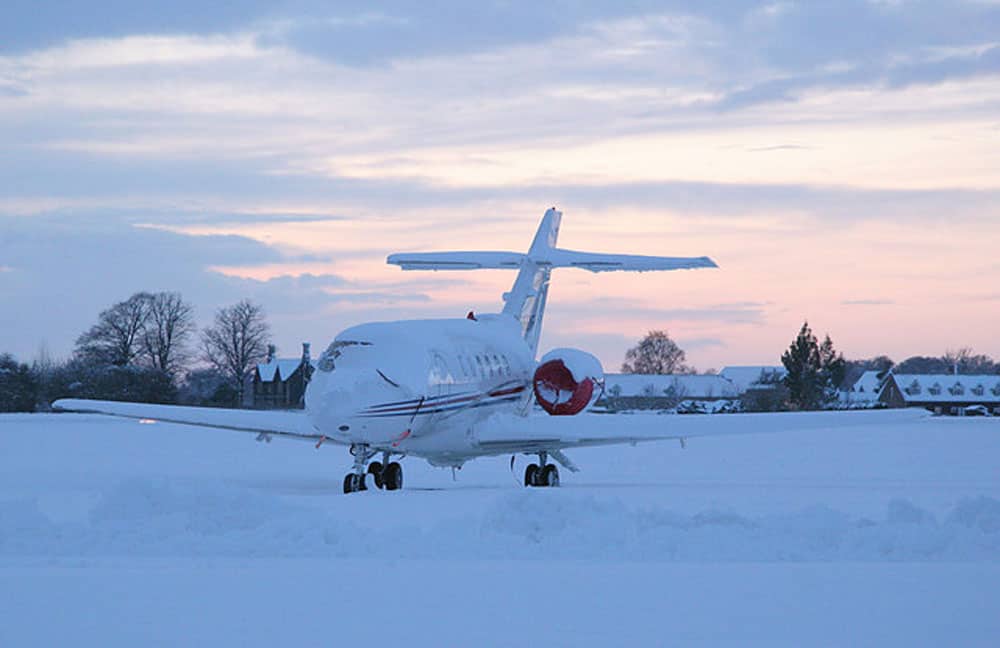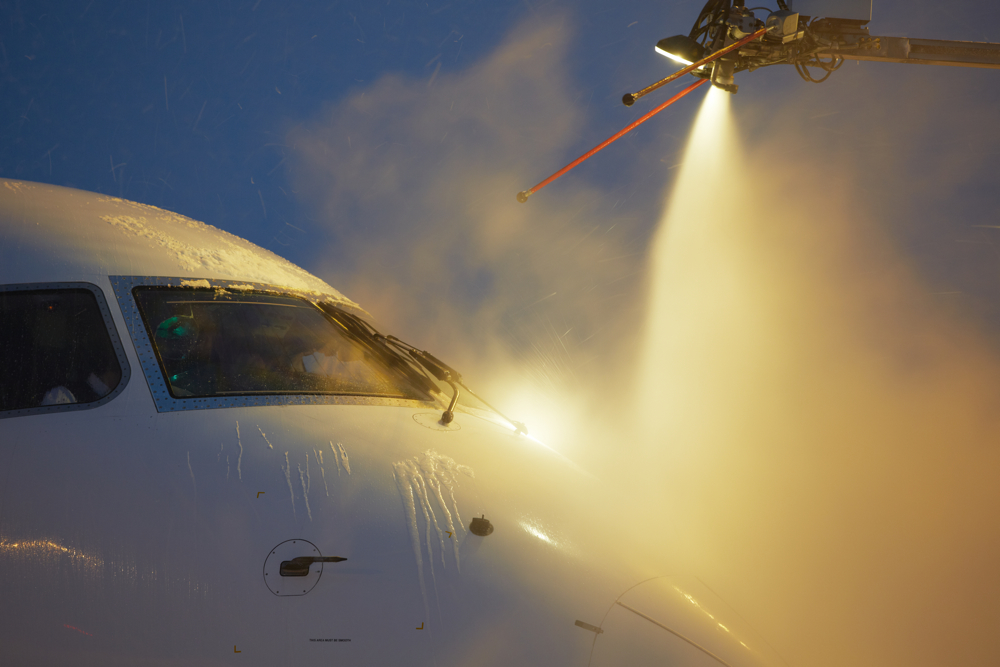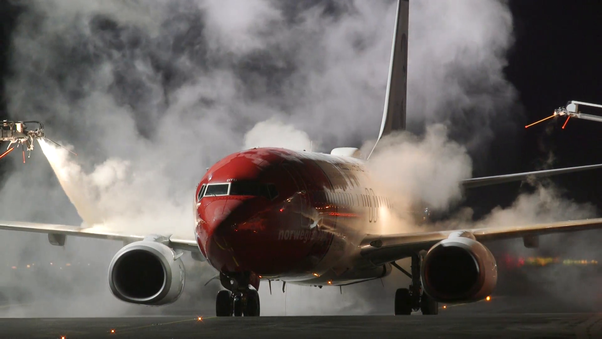If you fly private there is one important issue you need to know about booking a jet in cold seasons:
De-icing - the procedure of snow, ice or frost removal from the aircraft surface before its takeoff, as in winter time jets staying outdoors get covered with ice, snow and sleet - just like your car.

But unlike cars, cleaning up the aircraft from all snow and frost, before it departs, is required by law. And unlike commercial aviation, private jet travellers must be aware of this process, as it entails additional costs to your flight.
The procedure itself implies a special chemical substance, usually a fluid, to be applied onto the jet exterior. Application of heat is another possible technique, along with mechanical ways of cleaning.
The chemicals are intended for de-cing itself but can also have anti-icing features that prevent the jet airplane from ice adhesion and delay the formation of frost layers on its surface. Just like oil poured on frying pans before cooking, such substances can make the mechanical part of eventual ice removal much easier for the operators.

Passengers can already be on-board while the de-icing manoeuvre is conducted. If you see a bright-coloured liquid sprayed over the aircraft - just enjoy the process: the colour is needed to make sure no areas are left untouched, and the takeoff is definitely very soon.
The de-icing/anti-icing fluid price per gallon is around $25 or more. The number of gallons needed depends on the type of your jet, the exact weather, precipitations and the time during which the aircraft stayed outside.
And this is the reason why the de-icing bill is typically a separate one, issued upon the flight termination. One cannot be sure in advance what amount of chemicals will be used and after what weather conditions.

Starting from around $1,500 for a light jet the total price may reach several thousand USD if you are to cover long distances on a large jet.
However, there is a small tip: ask your booking manager to check if there are hangar-kept airplanes available for your flight. If yes, it can significantly reduce the expenses.
Although it takes extra time, delaying your takeoff, and raises your charter total price - de-icing is a crucial part of air travelling in the winter, as it is meant for your safety.